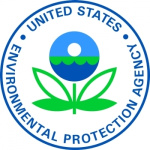- Industry: Government
- Number of terms: 11955
- Number of blossaries: 0
- Company Profile:
U.S. Environmental Protection Agency (EPA) is a federal agency responsible for the development and enforcement of regulations for human health and environment protection. The agency researches and sets standards for environmental programs and delegates. It was founded in 1970 following the proposal ...
Chemicals that are either naturally occurring or identical to naturally occurring substances. Examples include hormones, pheromones, and enzymes. Biochemicals function as pesticides through non-toxic, non-lethal modes of action, such as disrupting the mating pattern of insects, regulating growth, or acting as repellants. Biochemicals tend to be environmentally compatible and are thus important to Integrated Pest Management programs.
Industry:Agricultural chemicals
Certain microorganisms, including bacteria, fungi, viruses, and protozoa that are effective in controlling target pests. These agents usually do not have toxic effects on animals and people and do not leave toxic or persistent chemical residues in the environment. Comb. with above
Industry:Agricultural chemicals
Diseases that hurt and sometimes destroy plants. Blights will cause a plant to wither, stop growing, or cause all or parts of it to die.
Industry:Agricultural chemicals
Capable of causing cancer. A suspected carcinogen is a substance that may cause cancer in humans or animals but for which the evidence is not conclusive.
Industry:Agricultural chemicals
A person who is authorized to apply “restricted-use” pesticides as result of meeting requirements for certification under FIFRA-mandated programs. Applicator certification programs are conducted by states, territories and tribes in accordance with national standards set by EPA. “Restricted use pesticides” may be used only by or under the direct supervision of specially trained and certified applicators. Combine with below
Industry:Agricultural chemicals
Any individual who is certified under Section 4 of the Federal Insecticide, Fungicide, and Rodenticide Act (FIFRA) as authorized to use or supervise the use of any pesticide which is classified for restricted use. Any applicator who applies registered pesticides, only to provide a service of controlling pests without delivering any additional pesticide supplies, is not deemed to be a seller or distributor of pesticides under FIFRA.
Industry:Agricultural chemicals
The amounts of vapor in air that form explosive mixtures. These limits are expressed as lower and upper values and give the range of vapor concentrations in air that will explode if an ignition source is present.
Industry:Agricultural chemicals
Adding chlorine to water or wastewater, generally for the purpose of disinfection, but frequently for accomplishing other biological or chemical results. Chlorine also is used almost universally in manufacturing processes, particularly for the plastics industry.
Industry:Agricultural chemicals
A family of chemicals commonly used in air conditioners and refrigerators as coolants and also as solvents and aerosol propellants. CFCs drift into the upper atmosphere where their chlorine components destroy ozone. CFCs are thought to be a major cause of the ozone hole over Antarctica.
Industry:Agricultural chemicals
An adverse effect on any living organism in which symptoms develop slowly over a long period of time or recur frequently.
Industry:Agricultural chemicals
